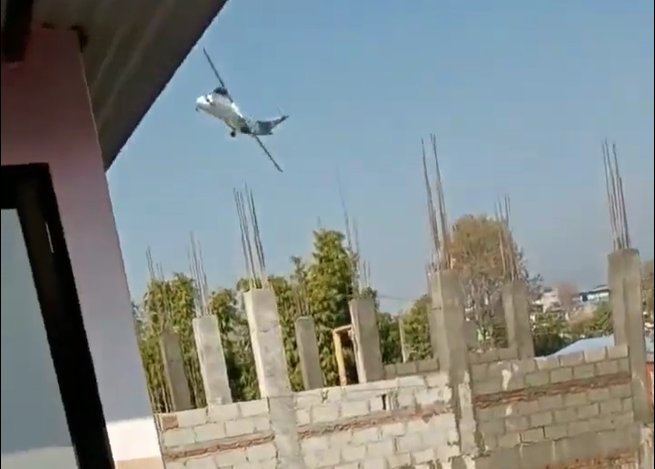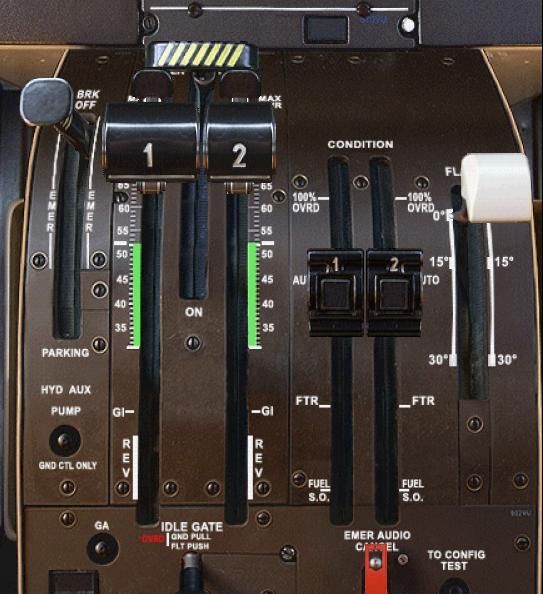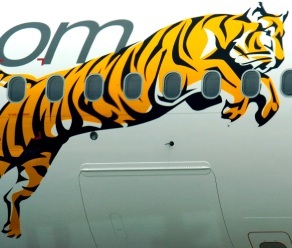Pilot Error In Yeti Airlines Tragedy in Nepal?
17 February, 2023
4 min read
By joining our newsletter, you agree to our Privacy Policy


Pilot error appears to be the cause of the Yeti Airlines ATR72 crash in Nepal on January 15, 2023, which claimed 72 lives.
Subscribe to the Airlineratings.com newsletter to get the relevant news first
World’s Top Twenty Safest Airlines 2023
According to the preliminary report from the Nepalese Aircraft Accident Investigation Commission one of the Yeti Airlines pilots selected the lever that feathers the props instead of the one next to it that lowers the flaps.
The report said:
"At 10:56:27, the PF (Pilot Flying) disengaged the Autopilot System (AP) at an altitude of 721 feet Above Ground Level (AGL). The PF then called for “FLAPS 30” at 10:56:32, and the PM (Pilot Monitoring) replied, “Flaps 30 and descending”. The flight data recorder (FDR) data did not record any flap surface movement at that time. Instead, the propeller rotation speed (Np) of both engines decreased simultaneously to less than 25% and the torque (Tq) started decreasing to 0%, which is consistent with both propellers going into the feathered condition. When propellers are in feather, they are not producing thrust."
Feathering of the prop moves the angle of the prop from producing thrust to a neutral position and not producing thrust.

The yeti Airlines flight was operated by two Captains, one Captain was in the process of obtaining aerodrome familiarization for operating into Pokhara and the other Captain was the instructor pilot. The Captain being familiarized, who was occupying the left-hand seat, was the Pilot Flying (PF) and the instructor pilot, occupying the right-hand seat, was the Pilot Monitoring (PM).
The stick shaker was activated twice, warning of an aerodynamic stall, the final time at 10:57:26 and the aircraft “banked towards the left abruptly.”
The full interim report can be downloaded here.
About AirlineRatings.com
Airlineratings.com was developed to provide everyone in the world a one-stop shop for everything related to airlines, formed by a team of aviation editors, who have forensically researched nearly every airline in the world.
Our rating system is rated from one to seven stars on safety – with seven being the highest ranking. Within each airline, you will find the country of origin, airline code, booking URL and seat map information. The rating system takes into account a number of different factors related to audits from aviation’s governing bodies, lead associations, as well as the airlines, own safety data. Every airline has a safety rating breakdown so you can see exactly how they rate.
Over 230 of the airlines on the site that carry 99 per cent of the world’s passengers have a product rating. Given that low-cost, regional and full-service carriers are so different we have constructed a different rating system for each which can be found within each airline.
Airlineratings.com has information on over 30 types of aircraft from the latest Boeing 787 to the A380 and smaller jets.
Best of all, there are simple answers to many of the quirky questions including:
“What are all those noises after takeoff and before landing?”
“Why do you have to put the window shades up for landing and takeoff?”
“What is a winglet and what is it for?
“Why is it so costly to fly short distances?”
“How often is an aircraft maintained?
“How strong is a wing?”
“How do they test aircraft”
“How often do plane tyres need to be replaced?”
Next Article
Virgin gets nod for Tiger deal

Get the latest news and updates straight to your inbox
No spam, no hassle, no fuss, just airline news direct to you.
By joining our newsletter, you agree to our Privacy Policy
Find us on social media
Comments
No comments yet, be the first to write one.

